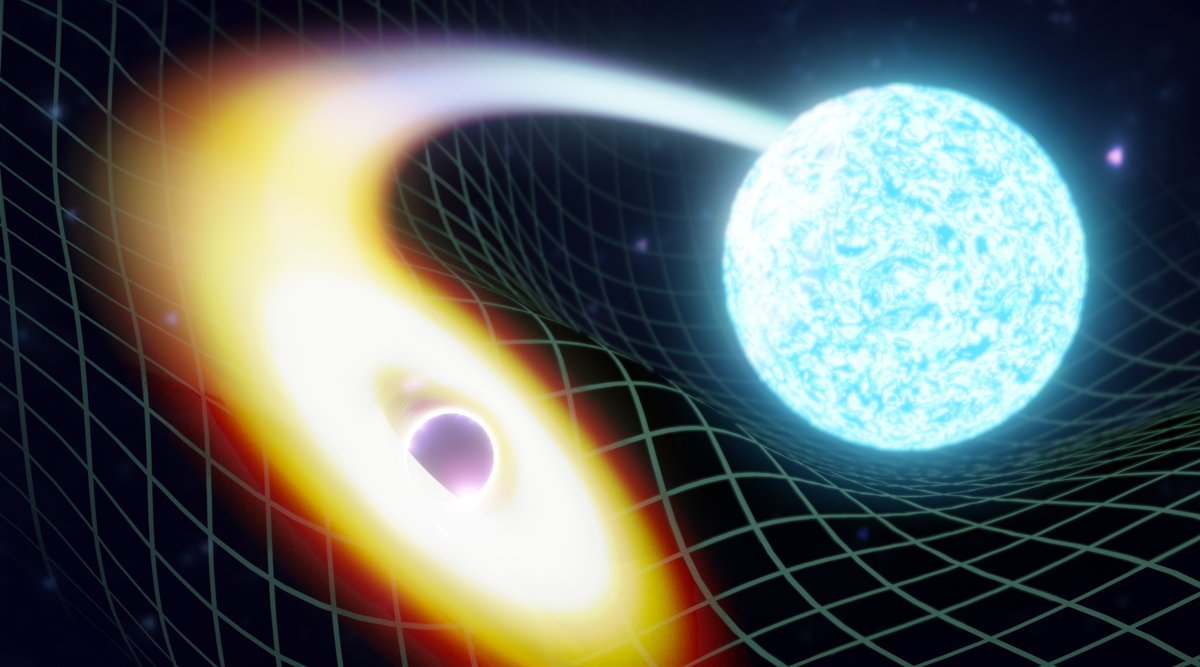Eccentric search for Neutron star-black hole (NSBH) and binary neutron star (BNS) mergers within O3 advanced LIGO and advanced VIRGO data
[Rahul Dhurkunde]1, 2, Alexander H. Nitz3,
1. Max-Planck-Institut for Gravitationsphysik (Albert-Einstein-Institut), D-30167 Hannover, Germany
2. Leibniz Universitat Hannover, D-30167 Hannover, Germany
3. Department of Physics, Syracuse University, Syracuse, NY 13244, USA
(Image credits: Soheb Mandhai)
The possible formation histories of neutron star binaries remain unresolved by current gravitational-wave catalogs. The detection of an eccentric binary system could be vital in constraining compact binary formation models. We present the first search for aligned spin eccentric neutron star-black hole binaries (NSBH) and the most sensitive search for aligned-spin eccentric binary neutron star (BNS) systems using data from the third observing run of the advanced LIGO and advanced Virgo detectors. No new statistically significant candidates are found; we constrain the local merger rate to be less than 150
A preprint version of the paper is available on arXiv. This release contains the following:
- Search
- Configuration files for the search, template bank, and injections used for the analysis.
- Search results
- List of top candidates
- The search sensitivity as a function of mchirp and eccentricity (HDF5 files).
- Constraints
- Population synthesis data -- Mchirp and eccentricity samples.
- Noise ASDs used to compute the optimal SNRs for the idealized searches.
- Jupyter-lab notebooks to obtain the 90 % upper limits on the local merger rate.
- Measurability analysis
- Scripts to compute the simplified Bayesian inference.
- Dictionary of measurable binary sources for given SNRs (keys).
** The simulated data for the idealized searches is not provided due to the file size limit on GITHUB. This can be made available upon reasonable requests
This work is licensed under a Creative Commons Attribution-ShareAlike 3.0 United States License.
We encourage use of these data in derivative works. If you use the material provided here, please cite the paper using the reference:

